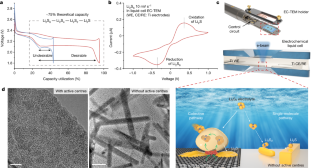2023-09-06 ペンシルベニア州立大学(PennState)
◆この研究はペンシルベニア州立大学の研究チームによって行われ、ヒスチジンは乳牛の乳生産にとって重要であり、低タンパク質の飼料を与えた場合でも、ヒスチジン補給により乳たんぱく質の収量が大幅に増加することが示されました。ヒスチジンは乳牛にとって重要なアミノ酸であり、長期間の実験が必要です。
<関連情報>
- https://www.psu.edu/news/research/story/cattle-low-protein-rations-may-need-amino-acid-supplement-boost-milk-yield/
- https://www.sciencedirect.com/science/article/pii/S0022030223004162
乳牛におけるヒスチジン補給の泌乳成績への影響: メタアナリシス Lactational performance effects of supplemental histidine in dairy cows: A meta-analysis
S.E. Räisänen, H. Lapierre, W.J. Price, A.N. Hristov
Journal of Dairy Science Available online: 26 July 2023
DOI:https://doi.org/10.3168/jds.2022-22966

ABSTRACT
The objective of this meta-analysis was to examine the effects of supplemental His on lactational performance, plasma His concentration and efficiency of utilization of digestible His (EffHis) in dairy cows. The meta-analysis was performed on data from 17 studies published in peer-reviewed journals between 1999 and 2022. Five publications reported data from 2 separate experiments, which were included in the analyses as separate studies, therefore resulting in a total of 22 studies. In 10 studies, His was supplemented as rumen-protected (RP) His; in 1 study, 2 basal diets with different dHis levels were fed; and in the remaining experiments, free His was infused into the abomasum (4 studies), the jugular vein (3 studies) or deleted from a mixture of postruminally infused AA (4 studies). The main forages in the diets were corn silage in 14 and grass silage in 8 studies. If not reported in the publications, the supplies of dietary CP, metabolizable protein (MP), net energy of lactation, and digestible His (dHis) were estimated using NRC (2001). An initial meta-analysis was performed to test the standard mean difference (SMD; raw mean difference of treatment and control means divided by the pooled standard deviation of the means), that is, effect size, and the corresponding 95% confidence interval (CI) in production parameters between His-supplemented groups versus control. Further, regression analyses were also conducted to examine and compare the relationships between several response variables and dHis supply. Across studies, His supplementation increased plasma His concentration (SMD = 1.39; 95% CI: 1.17–1.61), as well as DMI (SMD = 0.240; 95% CI: 0.051–0.429) and milk yield (MY; SMD = 0.667; 95% CI: 0.468–0.866), respectively. Further, milk true protein concentration (MTP; SMD = 0.236; 95% CI: 0.046–0.425) and milk true protein yield (MTPY; SMD = 0.581; 95% CI: 0.387–0.776) were increased by His supplementation. Notably, the increase in MTP concentration and MTPY were 3.9 and 1.3 times greater for studies with MP-deficient (according to NRC 2001) diets compared with studies with MP-adequate diets. The regression analyses revealed that production parameters (DMI, MY, and MTPY) responded in a nonlinear manner to increasing His supply. Further, we detected a difference in the magnitude of change in MTPY and plasma His concentration with the level of His supply and between His supplementation methods, being greater for infused His compared with RPHis. Lastly, a linear and negative relationship between EffHis and the ratio of total digestible His to net energy for lactation supply was observed, indicating an important interaction between dHis and energy supply and EffHis (i.e., utilization of dHis to support protein export). Overall, these analyses confirm His as an important AA in dairy cattle nutrition.



